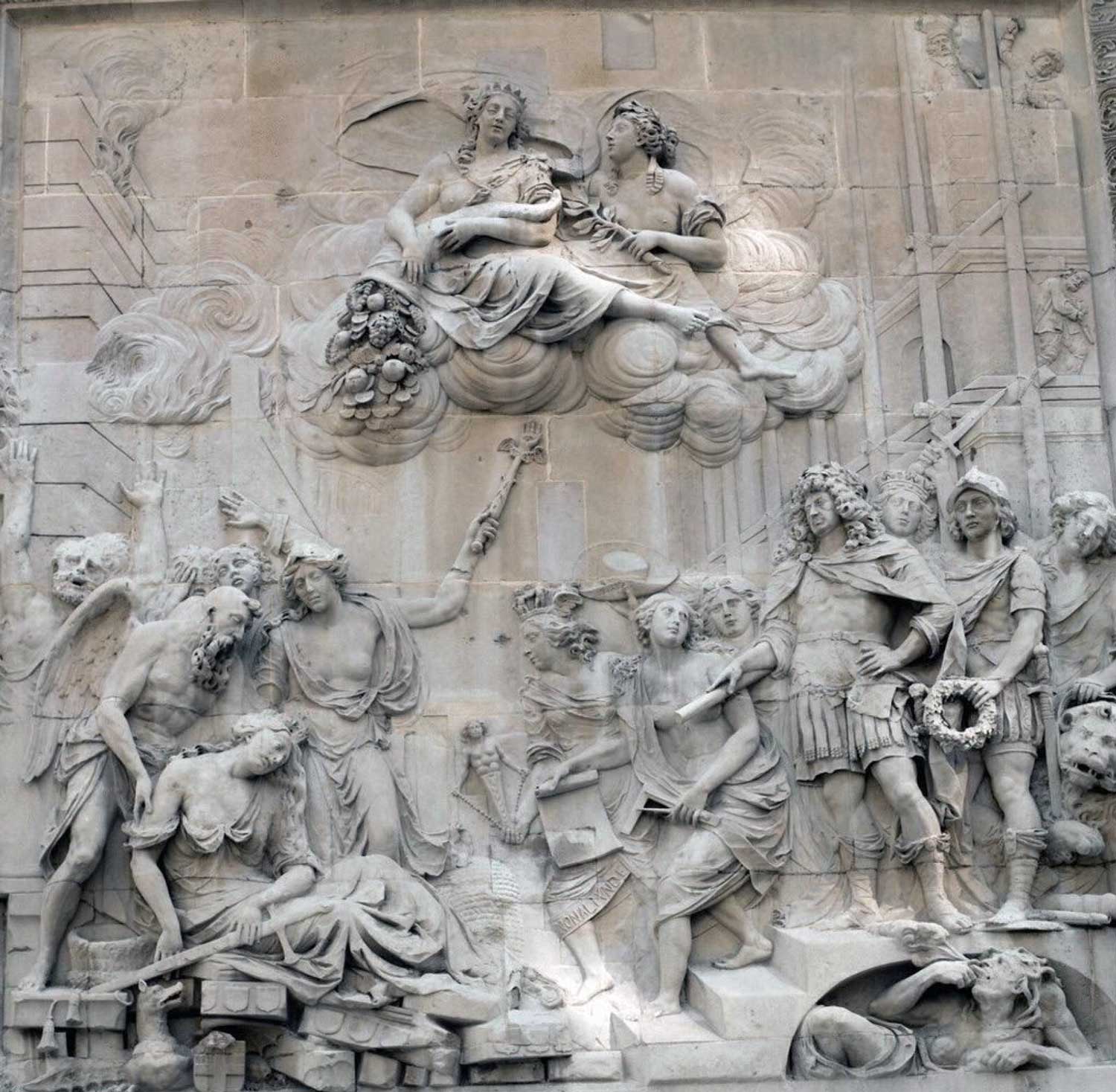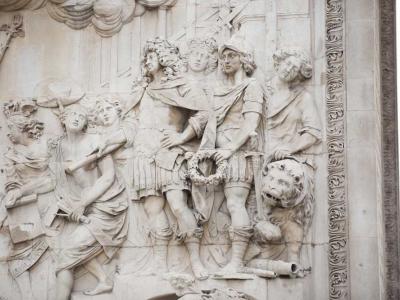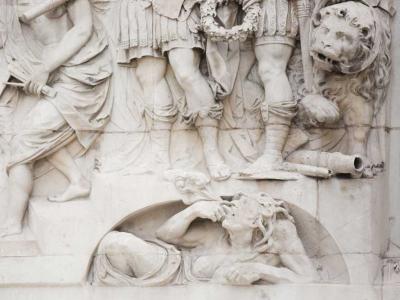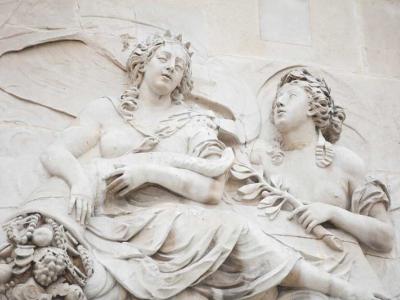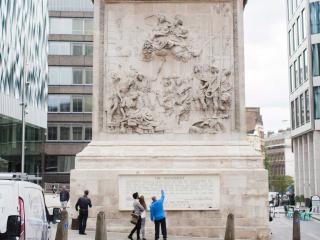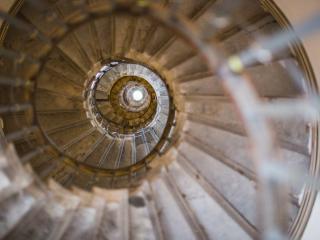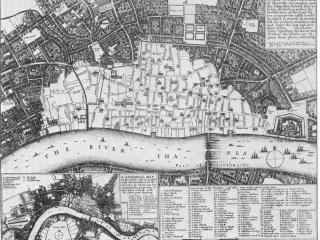Discover the meaning behind The Monument's Frieze
The Monument to the Great Fire of London is located on Fish Street Hill, just next to Monument tube station. Hundreds of thousands of people pass the memorial every week, but many passers-by won’t have noticed the beautiful sculpture adorning it’s western face - even fewer will have taken the time to decode it’s intricate and historical meaning.
This page will answer your questions on who carved the sculpture on The Monument and what the carving on the base of The Monument means. Read on to discover the meaning of the Frieze and the man behind the carving, Caius Gabriel Cibber.
